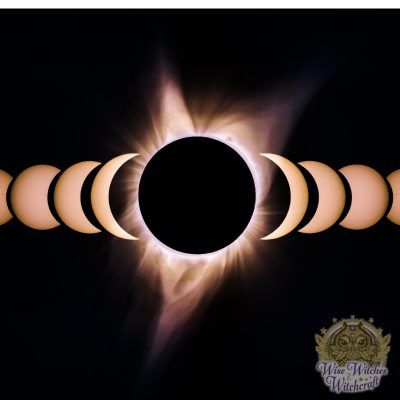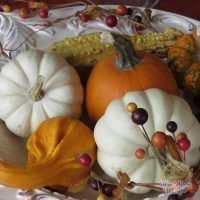Esbats: Full Moon Celebrations for Pagans, Wiccans, and Witches
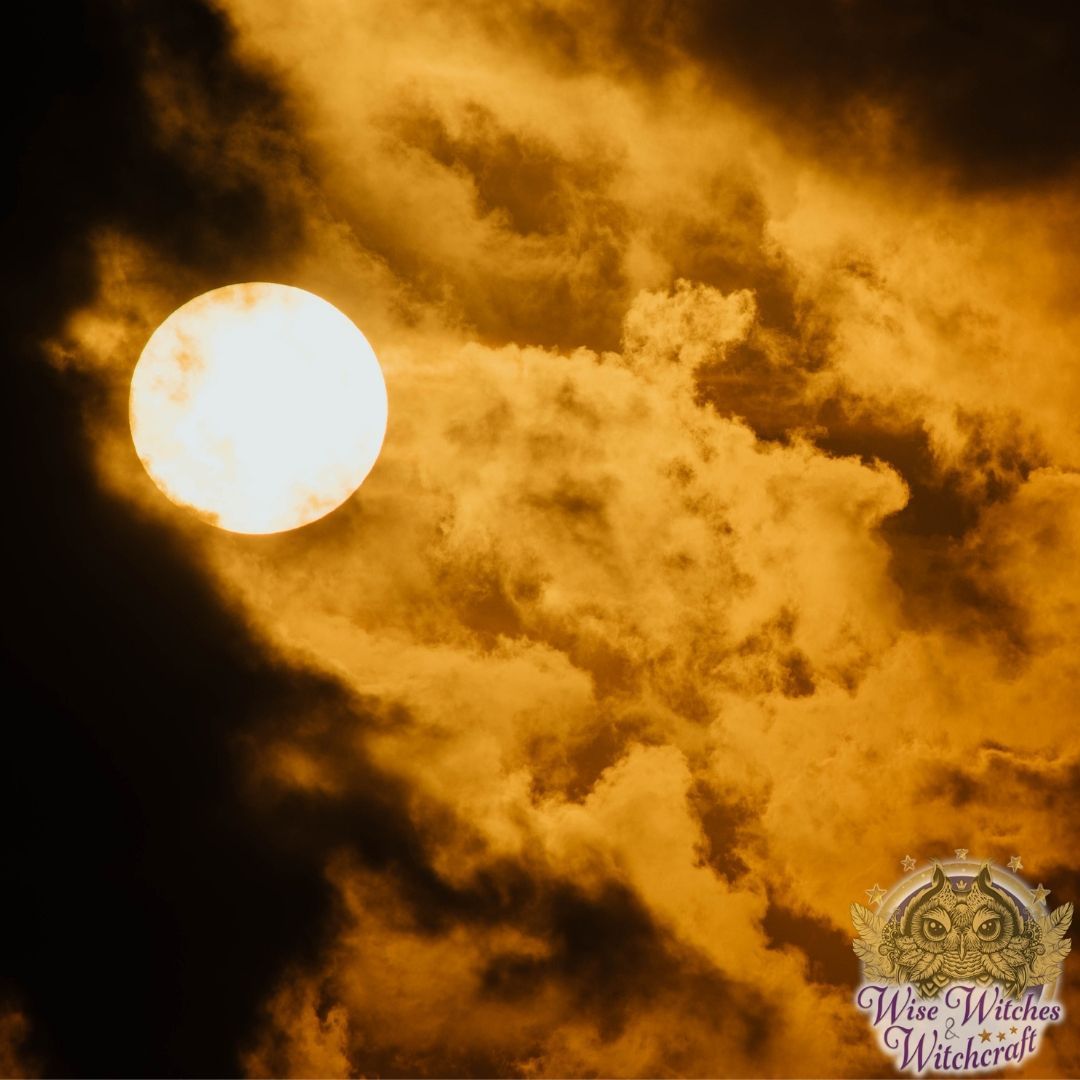
“Summer ends, and Autumn comes, and he who would have it otherwise would have high tide always and a full moon every night.”
– Hal Borland
The word Esbat stems from a centuries-old esbattre and the more Modern French ébat. When translating the Old French term, the purpose of Esbat becomes clear. The word means to amuse oneself or to frolic. Esbat is a solitary practitioner’s celebration day or coven gathering occurring outside of one of the eight Sabbats. But, according to Janet and Stewart Farrar, authors of A Witches’ Bible, the Esbat is more than a celebration.
An esbat is a time for training psychic abilities, performing spells, and conducting healings. It’s also a time for feasting and sharing quality time with coven members who are akin to a family. Both solitary practitioners and coven members use the time to honor the cycles of the moon and to remember their commitment to honoring the old ways. On Esbat, many practitioners reflect on their spiritual path and what they need to grow spiritually.
Esbats and Coven Workings

Some covens are teaching covens where the elders in the Inner Court educate those in the outer court. A coven will have a High Priestess at minimum. Some also have a High Priest. There are also priestesses and priests in the inner court. Sometimes initiates are part of the inner court as well.
Students are in the Outer Court. Students are those who are dedicating to the Craft. They are undergoing a year and a day worth of study. Following the year and a day worth of study, the student may choose to initiate into a coven. Elders in the coven might be responsible for deciding if the practitioner is ready to move up to the next step. It is an important decision. The person dedicating should not feel pressure to move up the ladder of a coven hierarchy. Readiness is essential for spiritual growth and for proper magickal training.
Coven elders are motivators to ensure that those who want to dedicate continue to grow as a student. If the student’s studies lead to stagnation, then it is time for to reevaluate one’s path. The student may find in that evaluation that Wicca and a lifelong study of the magickal arts are not for them. There’s nothing wrong with this decision. This is the reason a student starts out on a path of study in the first place. It lets them explore Wicca and the practices of NeoPagans. This is so the candidate can make informed decisions about their spiritual path.
An Esbat is a coven gathering outside of a holiday Sabbat. The time the elders take teaching the students is during Esbats. This is particularly true if students engage in training and magickal studies. Thus, some covens may have more than a single Esbat each month. At least one of those Esbats are full moon gatherings.
The Timing of Esbats
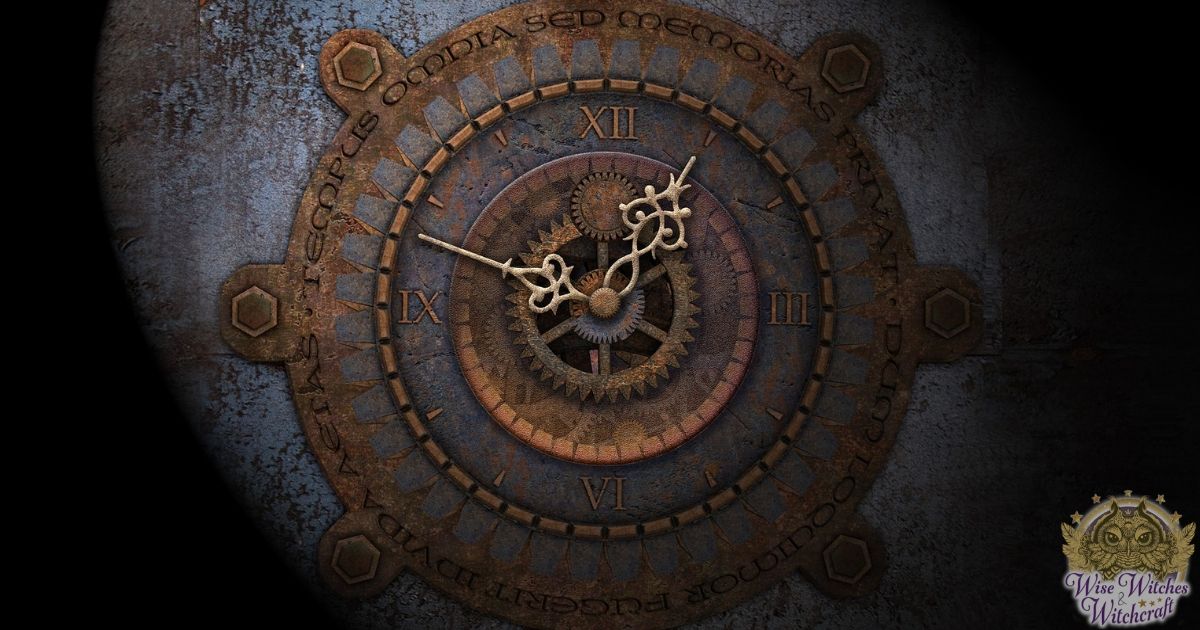
Esbats might occur once a month, bi-weekly, or every week, depending upon the coven. The reason for gathering on each full moon during the month stems back to writings from Charles G. Leland. In Aradia, Gospel of the Witches, the daughter of the Goddess Diana and God Lucifer is Aradia. Diana has told Aradia she is to become the first witch. She is to learn the craft and to teach it to others who are being brought down by greedy oppressors. Aradia speaks to those she intends to teach. Her words are as follows:
“Once in the month, and when the moon is full,
Ye shall assemble in some desert place,
Or in a forest all together join
To adore the potent spirit of your queen,
My mother, great Diana.”
This passage is often found in renditions of the Charge of the Goddess. Wording often varies from one rendition to another, but the general meaning stands. The Charge demands the honoring of the Feminine Divine. Why? It is a reminder of the importance of balance in all things and the significance of the Feminine Divine in many pagan systems of belief. It is a way of highlighting the striking contrast between religious systems with a sole focus on a male deity.
The Esbat is a time when the practitioner can remain cognizant of their personal and spiritual purposes as well. It also helps define the practitioner’s roots in a mundane and spiritual sense; this period is to remind us the balance one sees in the macrocosm is also something we also seek in the microcosm. Essentially, we remember the teaching of the Hermetic Axiom, “As above, so below.”
New Moon

At sunrise, the New Moon rises. At midnight, the waning moon appears in the sky even though we cannot see it. It is also the Dark Moon phase. The Dark Moon is a time corresponding to the Dark Goddess or Crone aspect of the deity. Many practitioners choose to honor the Divine while refraining from magickal works. Two New Moon in a month is a rare event. The second moon is therefore called a Black Moon.
Some practitioners might use this time for banishing of evil energies. Other’s might perform divination and scrying in hopes for a glimpse of the months ahead. There are also practitioners who choose this time to honor the Divine only. This moon phase represents the mysteries and the things we have yet to know.
Waxing Moon
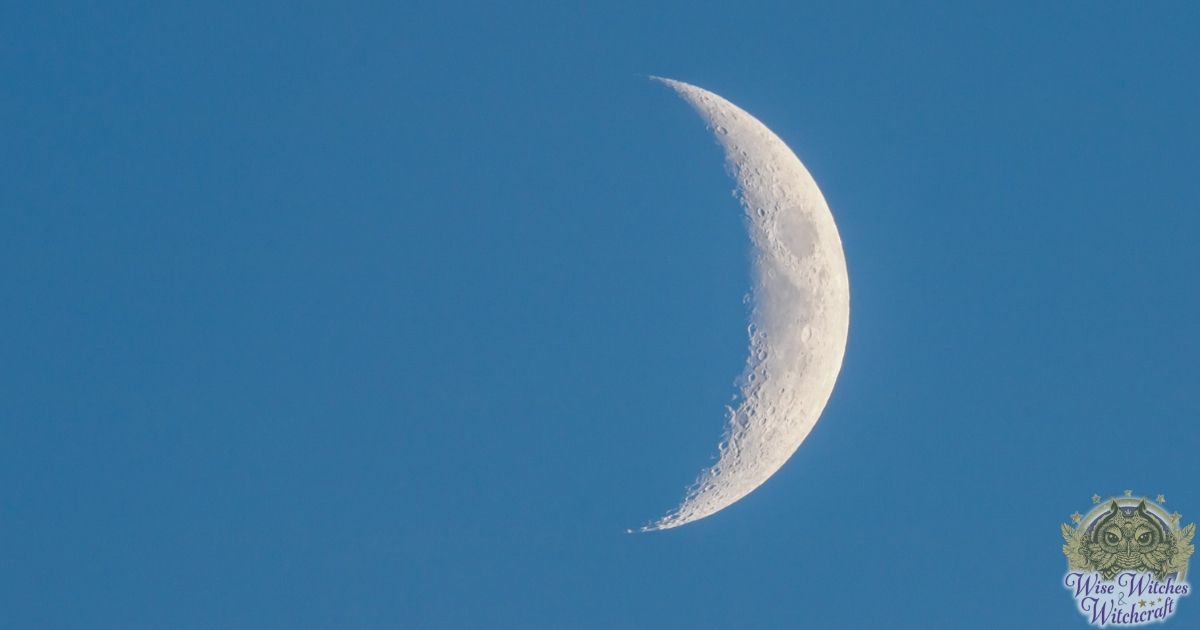
At noon, the waxing moon appears in the sky, even you if cannot see it in the daylight hours. The Waxing moon is the sign of beginnings and fresh starts. Magick aligning with this idea is appropriate now. The moon appears as a crescent in the sky much like a letter “C” backward. The period is for magick relating to creating change, luck, and for drawing good luck and love into one’s life. The Waxing Moon aligns with Maiden energies. Patron Goddesses include her virginal aspects. Athena, Diana, Persephone, and Epona are some examples of virginal Goddess aspects.
The waxing moon is about a fourteen-day period. When the phase reaches a point in the sky that is 45 to 90 degrees ahead of our Sun, it is the Moon of Regeneration. The period is about 3 to 7 days following the waxing moon’s start. It is a period ideal for strengthening the self, self-improvement magick. Spells for change and positivity are also ideal.
Following this waxing phase is the Moon of Caution. The moon reaches this phase when it is 90 to 135 degrees ahead of the Sun. The period is about 7 to 10 days from the start of the waxing phase. The Warrior aspects of the Divine is often the ideal patron during this time. Athena, Diana the Hunter, Minerva, and Artemis are great archetypes for magickal support. This is a time for new beginnings or fresh starts in projects requiring ambition.
The Waxing Gibbous moon occurs about 14 days from the Waxing Moon’s start. It is the Moon of Endings in a sense, even in the beginning phase. Here practitioners are preparing for the powerful time of the full moon. For when the moon is full, all magick and power reach a peak. This is a period of patience and waiting out the effects of magick. It is the time when magick is at work even if visible effects are not yet evident. It is a time of gestations and finishing off any loose ends.
The Esbat Lunar Phase: Full Moon
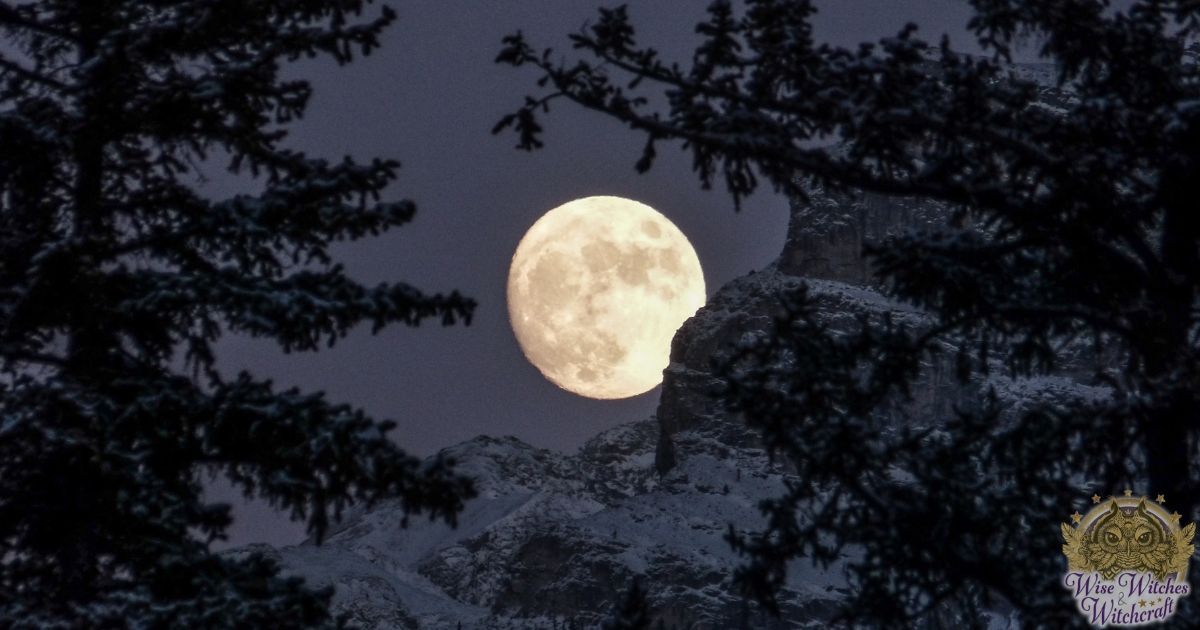
At sunset, the full moon rises. The full moon phase is the shortest of all phases, but also the most powerful. It lasts a period of about three days. When the moon is about 180 to 255 degrees ahead of our Sun, it achieves the full stage. This phase aligns with the Mother aspect of the Goddess. Patron deities include Morrigan, Spider-Woman, Diana, Luna, and Selene. Other deities include Freya, Demeter, Isis, Hera, and Anu. The full moon empowers all works of magick. This is The Moon of Celebration.
On a rare occasion, there are two full moons in a month’s time. This event is called a blue moon. The blue moon is also something occurring when there are 13 moons in a year’s time, with the final moon in the year being the Blue Moon event. The reasons why the blue moon definition varies is complex, but it results in different ways of calculating a blue moon event. The saying “once in a blue moon” expresses the rarity of the event. When a blue moon occurs, it is like an extra wallop of magickal empowerment you can use for backing magickal workings. Super Moons are when the moon appears extremely large because of its proximity to earth. These moon phases are spectacular when you want to illuminate what is dark.
Waning Moon
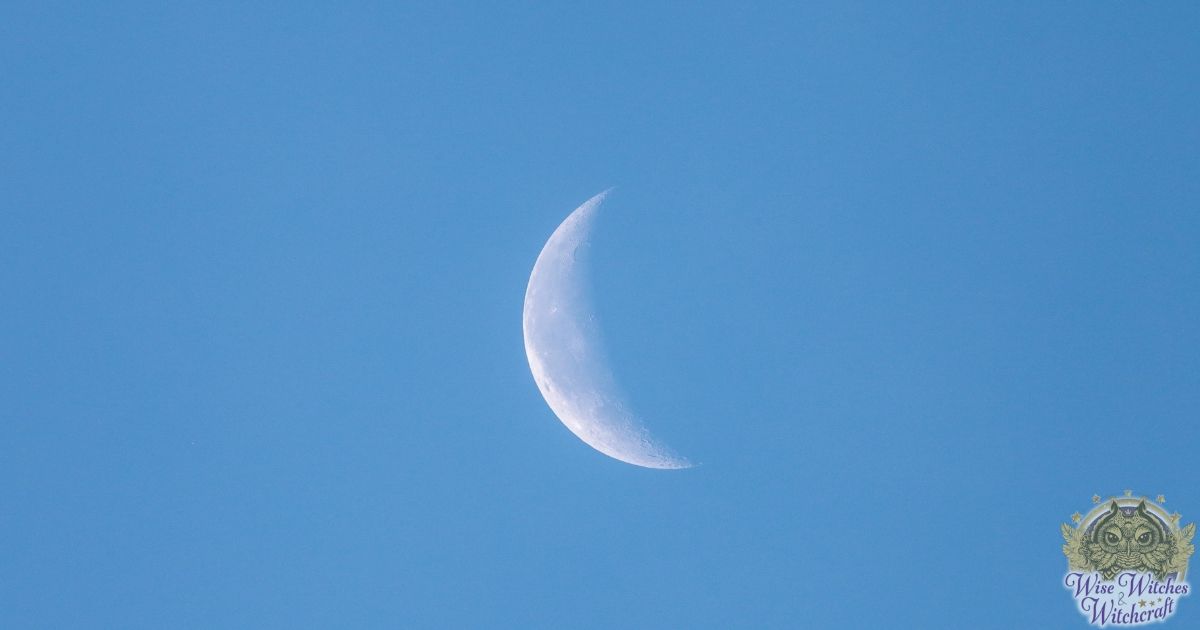
The Waning Moon aligns with the Crone aspect of the Goddess. It is a time of endings and closure; this makes it the perfect time for banishings and cleansing of negativity. It is a time for putting an end to bad habits; this is a time when patron deities include Goddesses like Morrigan or Hecate.
Three to 7 days into the phase is the Moon of Retribution; this is a time for making peace where there are disagreements. It is also a time for giving thanks for successful magick. Goddesses aligning with this phase include Bast, Demeter, and Ceres. It is a time for getting closure on issues or ridding oneself of undesirable influences.
About 7 to ten days after the onset of the waxing phase is the Moon of Harvest. It is a time for letting go of all negative energies. Banishings are still ideal now; this is a period for closure but also for planning new starts and beginnings. It is an excellent period for evaluating personal and spiritual growth. Resting is also a good idea during this time. Doing so helps to ensure strength with future magickal workings.
Esbats and Rites of Passage
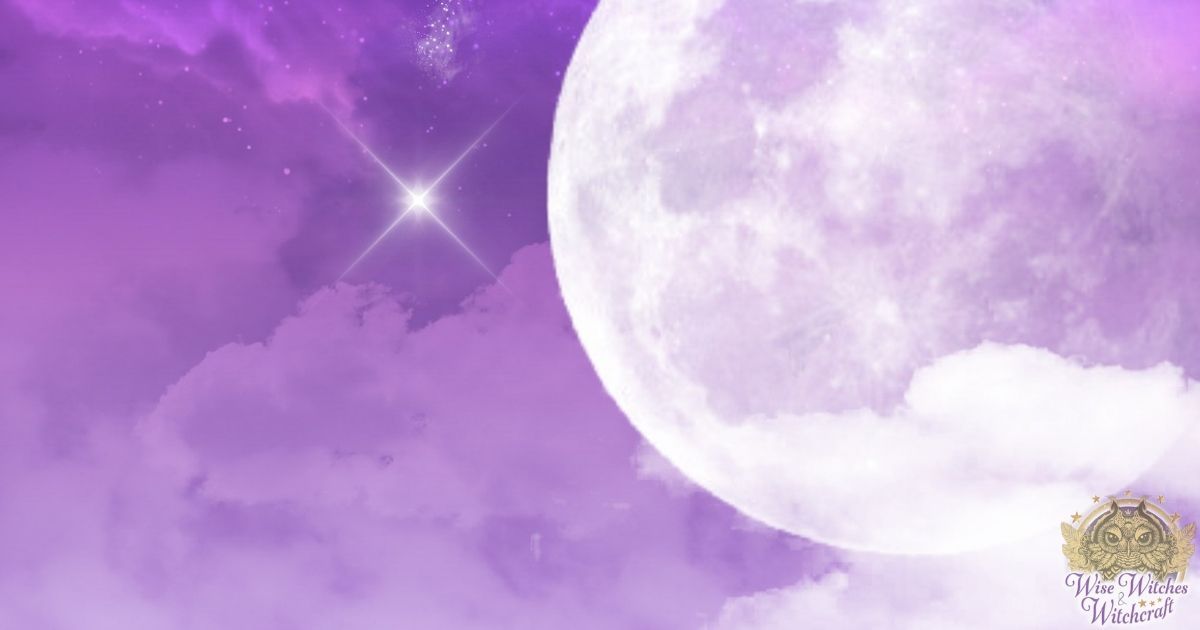
NeoPagans and Wiccans celebrate life. In doing so, they celebrate different rites of passage. Such rites are dependent on time and sometimes age or situation. For instance, a Wiccaning is the act of having a child blessed by the Goddess and God. Since Wiccans do not convert others or seek out practitioners, the child is not forced into Wicca. The child gets to choose their own spiritual path when the time is right. Thus, the Wiccaning is a blessing for the child. Parents choose Godparents who will help guide the child if the child chooses the path in later life. The pagan community might also commit to guiding the older child if they choose the pagan way of life.
New Beginnings: Dedications and Initiations are rites of passage as well. They mark the time when a practitioner embarks on a new part of their spiritual path. Rites of passage are often celebrated with feasting and merriment. These rites are often set for other important holidays such as one of the Sabbats.
Pagan Weddings: Handfastings are Pagan marriages. They are celebrations of the connection and bond between to people. Both parties do not have to be following the same religious path. The notion of “tying the knot” might originate from this Pagan practice. During the handfasting, those who are marrying have hands tied together. It signifies the bond the two intend to share and the connection between two souls.
Funerary Rites: Crossings are the final rite of passage. A crossing ceremony is a rite a pagan community attends to honor the deceased. Someone like a priest or priestess officiates. It is a ceremony for saying goodbye but also celebrating the person’s crossing over to the other side. In this way, the attendees recognize the continuation of the spiritual journey. At the same time, it is a chance for saying goodbye and sharing fond memories of the deceased as well.
The Esbat Lunar Phase: A Moon by Any Other Name

Throughout various cultures, the full moon has different titles. The names were chosen for each full moon typically reflect the time of year, seasonal changes, animal behaviors during a specific season, and may also reflect specific cultural traditions. Esbats are a time when one can recognize some of the ancient ancestral beliefs and practices considered appropriate for specific moon phases. The various moon titles also serve as correspondences for specific rites of passage or spellwork. Consider just some of the full moon variations in title below:
Esbat Reflections for Full Moon in January
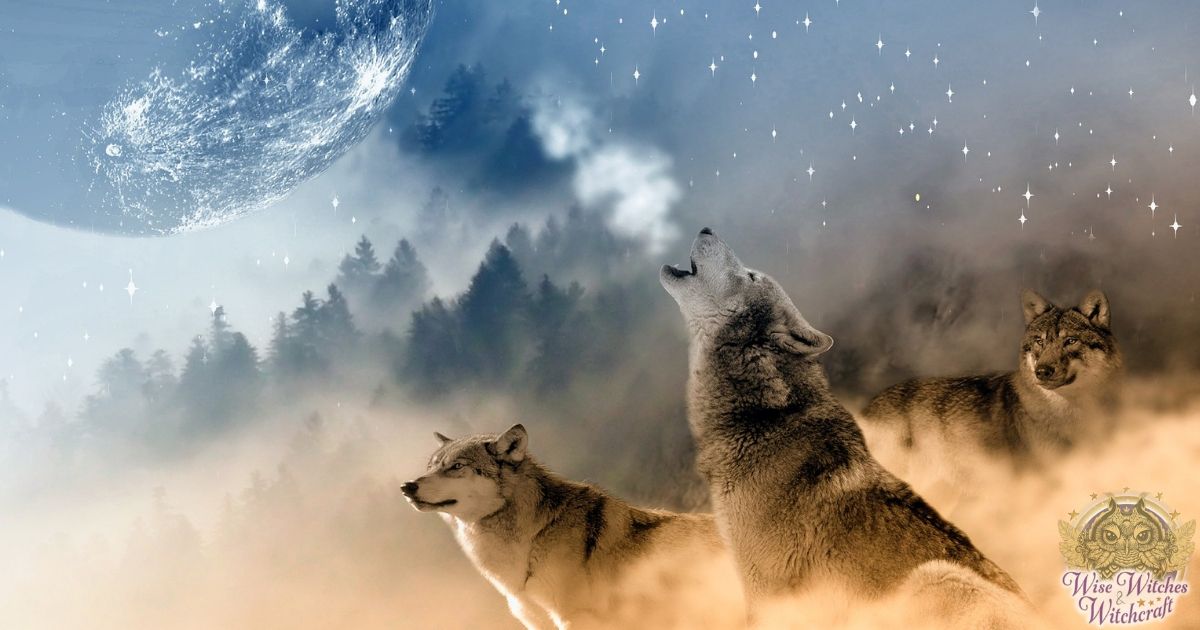
Wolf Moon, Snow Moon, and Ice Moon. The Wolf Moon is appropriate for January, and it may even apply to a February full moon phase. It is a time when Wolf breed and the creatures tend to howl more often because of it. The increased howling of the wolves is therefore applied to the full lunar phase of this month. Other titles such as the Snow and Ice Moon have more obvious meanings, especially in parts of the world where it snows during the winter season.
Since the full moon in January is the first to occur after Winter Solstice, some refer to the phase as Moon after Yule. Viewed another way, the January Moon is the last before Candlemas, where the earliest signs of spring begin: Here, the reference Old Moon may seem more appropriate. The moon phase is an ideal time for reflection on the season of light that is to come and the plans we intend to put into action contributing to our personal growth and the success on our spiritual path.
Esbat Reflections for the Full Moon in February
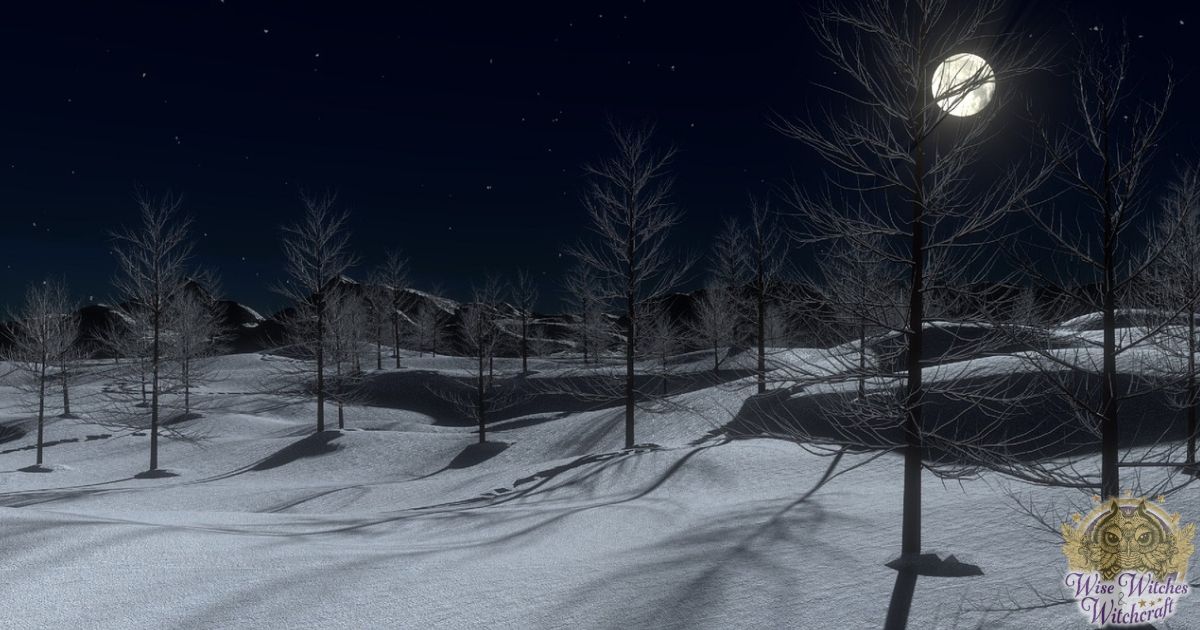
Of course, the Snow Moon title for February is befitting, but so are titles like the Chaste Moon, Storm Moon, and Hunger Moon. The month of February is long, cold, and brittle. The Abenaki called this moon phase “piaodagos” which references the brutality of the ice on the natural world. It literally means, “makes branches fall in pieces moon.” The Choctaw Indians called the January full lunar phase the “Moon of the Little Famine,” while the full moon in February rightly earned the title of “Full Moon of the Big Famine.”* If one was ill-prepared for the coming cold or if the cold season lasted longer than expected, it was not a rare instance for our hunting and gathering ancestors to experience hunger.
With modern pagan and witchcraft practices, we can consider the difficulties our ancestors had and cherish how well off we truly are in comparison. As a moon phase symbolizing “hunger,” we can give consideration to our own spiritual hunger and how we nourish our soul and personal growth. What is it we hunger for in our lives and our spirit? The February Esbat is an excellent time for such reflection.
*For more information on Native American Moon Titles, see American Indian Moons.
Esbat Reflections for Full Moon in March
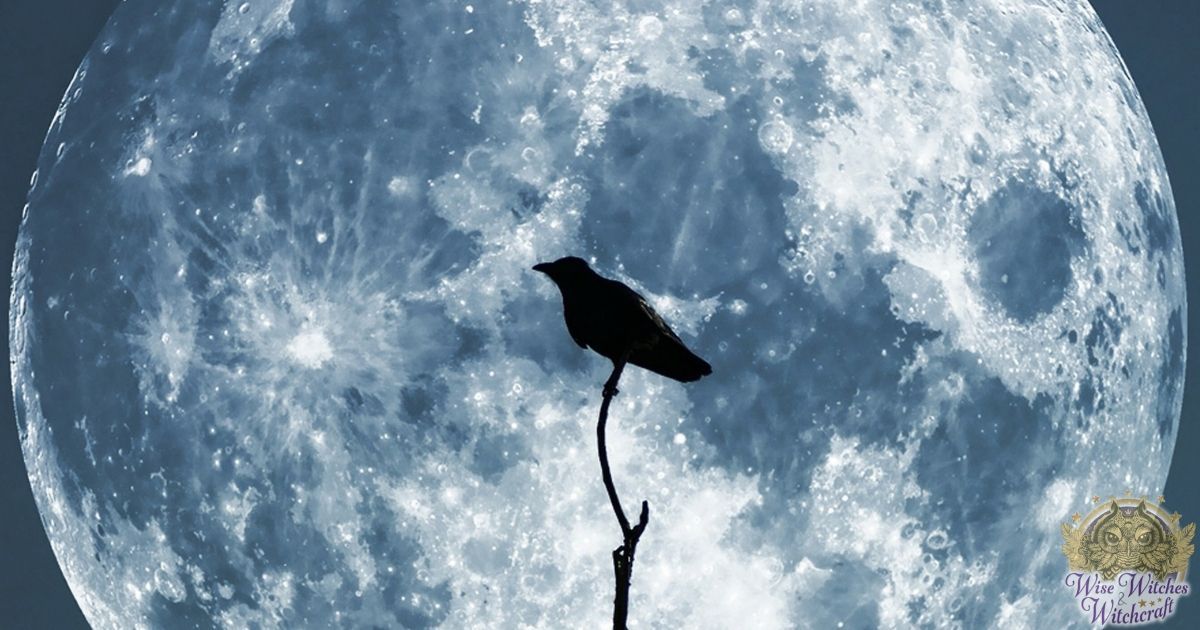
In March, one of the common folk names of the lunar phase is the Worm Moon. At winter’s end, this is the period where one will see earthworms making their way through the topsoil once more. Other names like the Crow Moon apply because it is during this time of year when the Crows would craw more signaling the beginning of spring and winter’s end. Names like the Sugar and Sap Moon apply because the tree sap thawed and started to flow once again. The title of Chaste Moon applies because the cold, harsh winter has diminished, and is now allowing fresh new growth from the earth in early spring.
Pagans can use the Full Moon Esbat as a period to reflect on purification of the mind and body. It’s a time to become active and implement those plans made throughout the winter season. Think of the Sap and Sugar Moon connotations to remind you of the sweeter things in life, and the sweetness of living.
Esbat Reflections for the Full Moon in April
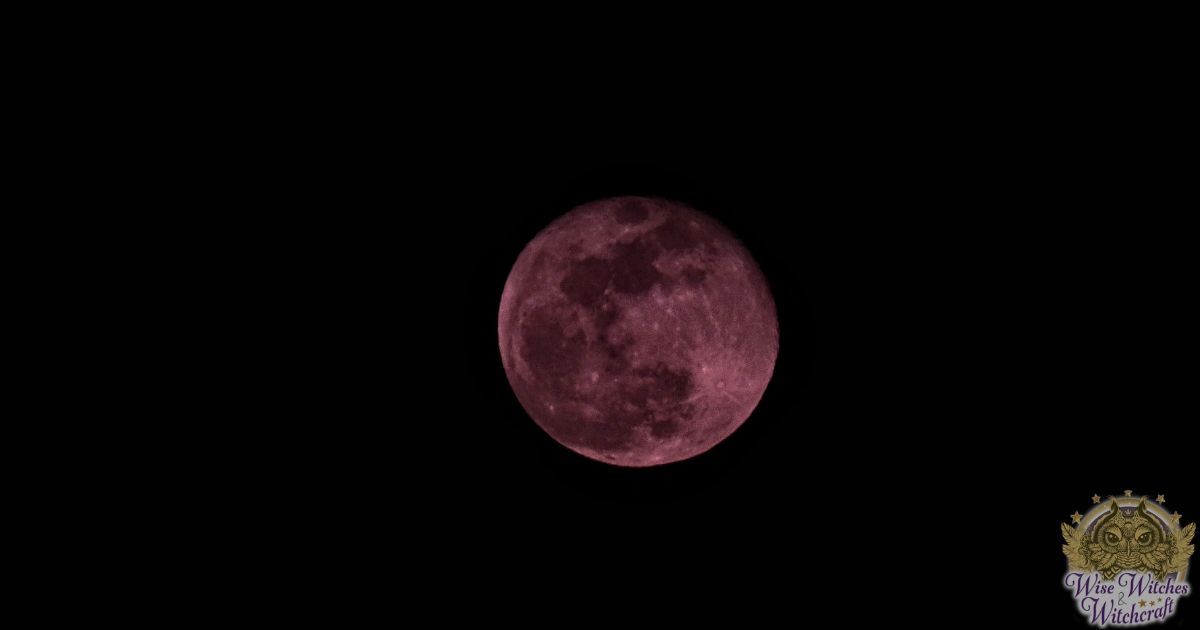
One common name for the Esbat Moon in April is the Pink Moon: A reference arising from the lovely spring flowers that appear during this time. The Egg Moon is a perfect reference aligning with the idea of the spring season and fertility. The references to Easter as well as Ostara and the goddess Esotre are evident in Moon titles like the Paschal Moon, and the Hare Moon, as hares were sacred to Her. The Cherokee called the April Moon, “The Flower Moon.”
Here, pagans and Witches can honor the blessings they already have in their lives, and they can begin plant seeds for the future. It’s a time for recognizing and honoring the maturation of the masculine divine, and the Goddess who has awakened from her wintery slumber. The growing flowers and blossoms are reminders she is alive and omnipresent. The April Esbat is perfect for honoring both aspects of the Divine while recognizing the Goddess’ energies coursing through us and around us. Now is time to reflect on the reality we co-create with the Universe.
Esbat Reflections for the Full Moon in May
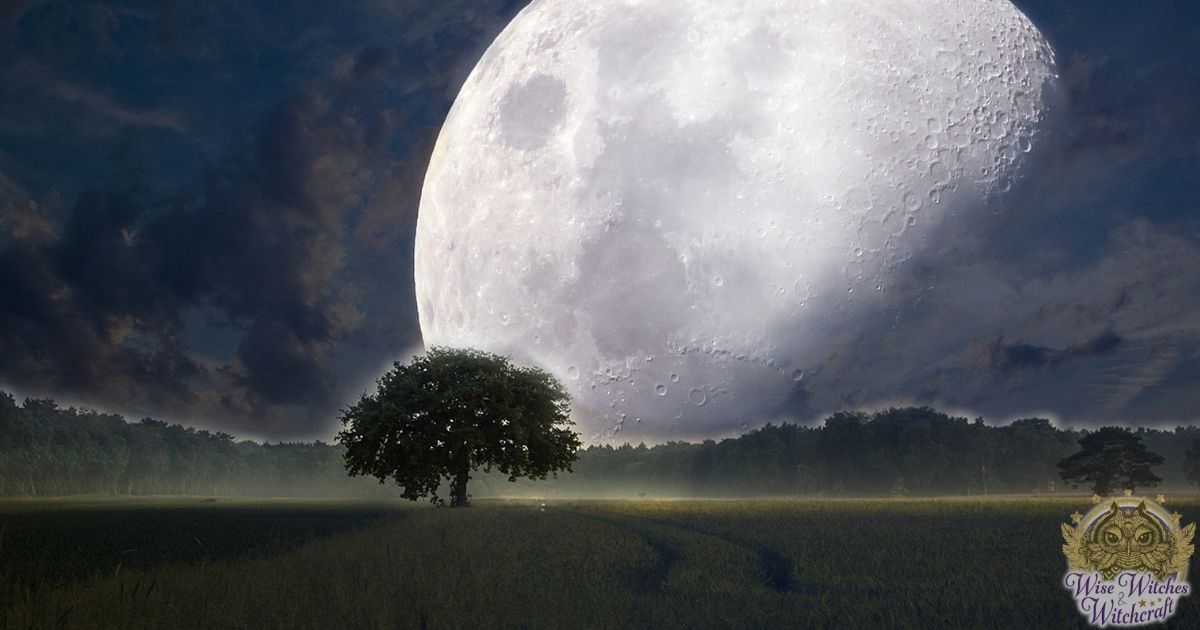
The full moon in the month of May is sometimes called The Planting Moon, Milk Moon, or the Corn Moon. The Milk Moon title stems from sheep, goats, and cows we feed on the growth of the earth and produce nourishing milk. The Corn Moon title comes from the fact it is time for the seed planting of corn. The Tlingit Natives from the Pacific West Coast called this lunar phase “The Moon Before Pregnancy.” According to the Wiccan Wheel of the Year, the title could not be more fitting. The first of May is Beltane, a time of The Great Rite and the union of the God and Goddess. Come Summer Solstice in June; it is a time to honor the pregnancy of the Goddess as a result of the God and Goddess’ union in May.
For this Esbat, it is time for honoring all that lives and the gift of life each of us has to cherish. Reflection on how to make the most of one’s life, and how to walk in our intended path of spirituality are key focuses for the May Esbat. We can continue planting our seeds for the future, both literal and figurative.
Esbat Reflections for the Full Moon in June
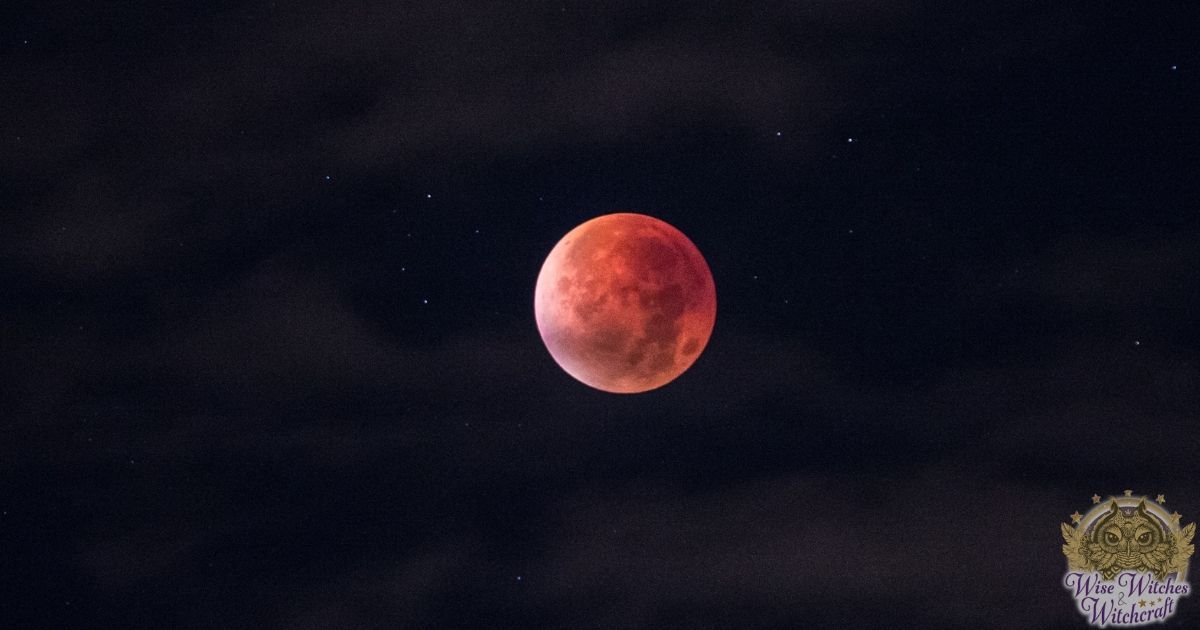
The Strawberry Moon is a common title for the month of June because this is the time the small berries would ripen. It is also the Rose Moon, because of budding flowers, The Hot Moon, due to the increasing light and summer heart, and the Mead Moon. It is also sometimes called “The Lover’s Moon,” referencing the love between the God and Goddess.
With the Summer Solstice falling within the same month, we at some point reach the longest day of the year and the shortest night. From that moment forward we also realize the nights will grow longer and the days short until we reach winter solstice. The summer Esbat calls on us to express our gratitude for all we receive and all we accomplish, but it also calls on us to consider the coming darker season, though distant, is imminent. It heightens our desire to enjoy the blessings of summer before it all fades into winter’s embrace once more.
Esbat Reflections for the Full Moon in July
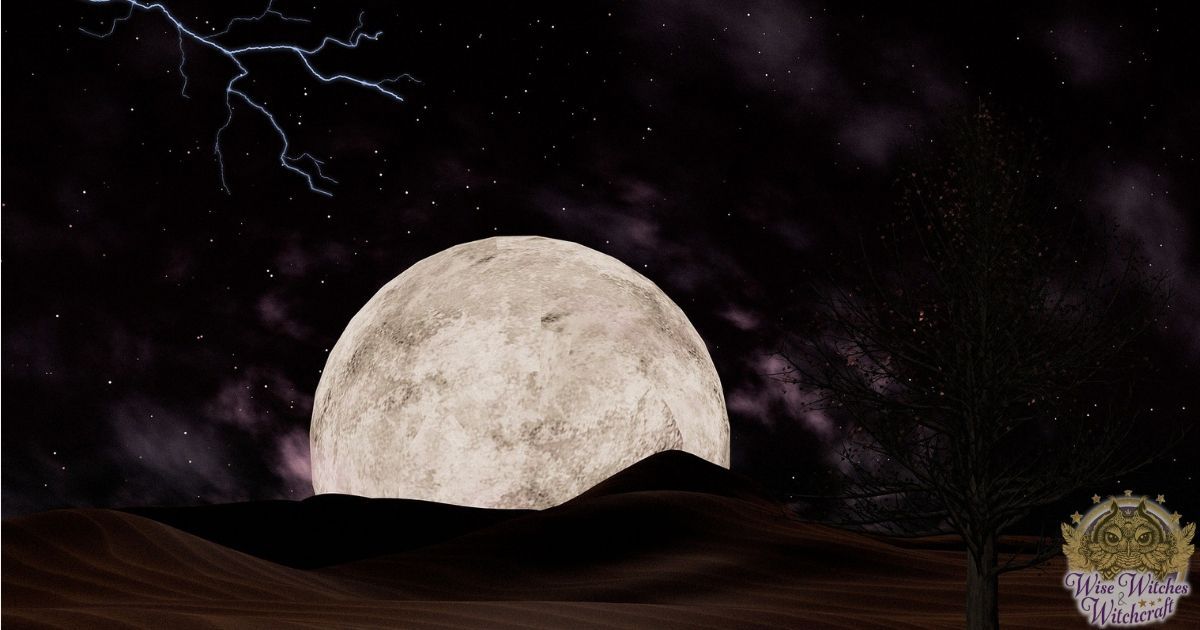
The Mead Moon and Buck Moon are common monikers for the Full Moon in July. It is the season when the bucks begin to show their horns for the first time.
The Buck Moon title might cause some of us to reflect more on the masculine Divine as A Wild Stag or Buck often represent him. The role of the masculine divine, a solar deity, and the symbolism of the waxing and waning light in the yearly cycle are things we can reflect on now. The Wort Moon, Hay Moon, and Thunder Moon are also titles appropriate for July’s Full Moon.
The month of July is exceptional for weather magick involving thunderstorms because of their frequency; Hence the title “Thunder Moon.” For full Moon Esbat, honoring sky deities like Zeus (lightning) and Jupiter (thunder) are ideal. Also, spend time in meditation where one might receive “thunderous thoughts” or “lightning strikes” of inspiration and epiphanies. The word “wort” is a reference to “herbs,” and, as such, “The Full Wort” moon is a reminder that it is time to harvest the herbs we’ve grown for their use in magick and healing. The month of July and August are perfect for drying herbs naturally for storage.
Esbat Reflections for the Full Moon in August
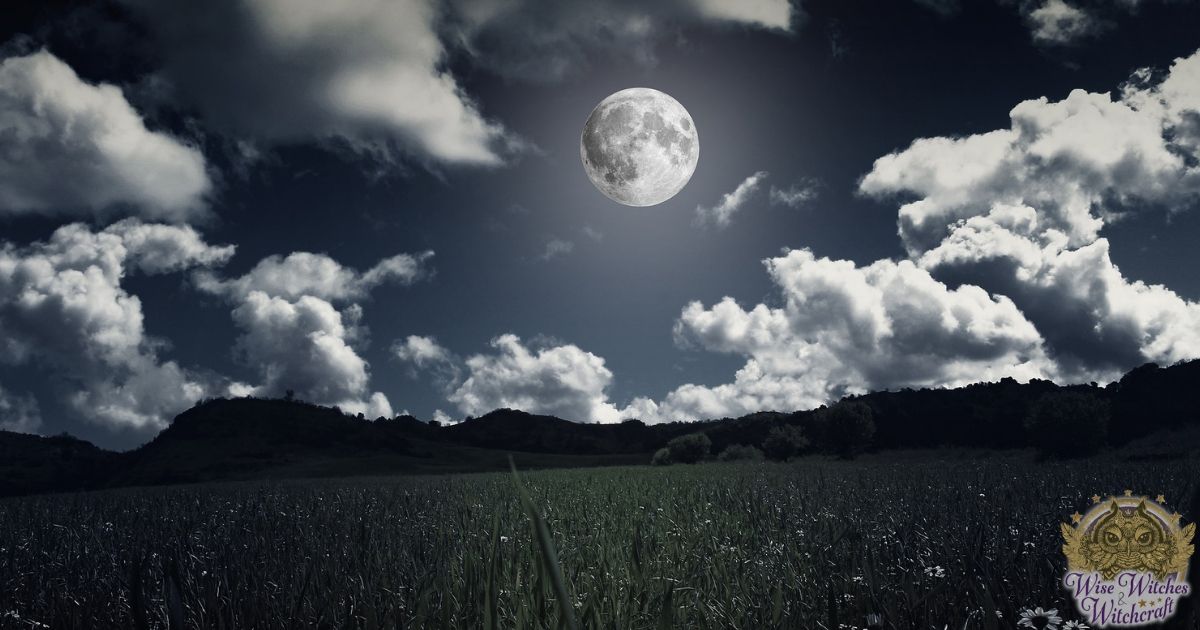
August’s Moon has many titles too, including Corn Moon (Green Corn Moon), Barley Moon, and Fruit Moon. Many of the titles, of course, relate to the harvest. It should be of no surprise seeing we celebrate Lammas, the first of the three harvest festivals in the Witches Wheel. Here it is time to give thanks to the great abundance of the harvest and how the earth sustains us.
During this Esbat, divination about the future winter season, meditations on tranquility and peace, and magickal workings aligning with the perpetuation of continued abundance are ideal. Expressing one’s gratitude, either in reflection, prayer, meditation or in offerings and libation are also excellent options to integrate into an Esbat celebration. On the night of the Esbat, you can make a new besom for ritual cleansing and to represent the God and Goddess. A mint sprig tied to the besom’s handle can help draw more abundance to you.
Esbat Reflections for the Full Moon in September

The September full Moon is called the Barley Moon, Harvest Moon, Corn Moon, or Full Corn Moon. Many of the names are similar to those titles applied to August’s Moon. Approximately every three years, the Harvest Moon will fall in the month of October, but the title often goes to the full lunar phase falling closest to the fall equinox; this is time to, once again, focus on balance in all things.
Once again, the titles reflect the harvesting of foods in preparation for the colder season, and in reaping what we’ve sewn throughout the year. As such, this period is an exceptional Esbat for considering what we’ve planted in our lives, and what we’ve reaped from our actions. Are there still changes we want to make? Are we headed in the right direction? The September Esbat gives us pause and time to consider if we need to redirect our course in personal affairs and along our spiritual path.
Esbat Reflections for the Full Moon in October
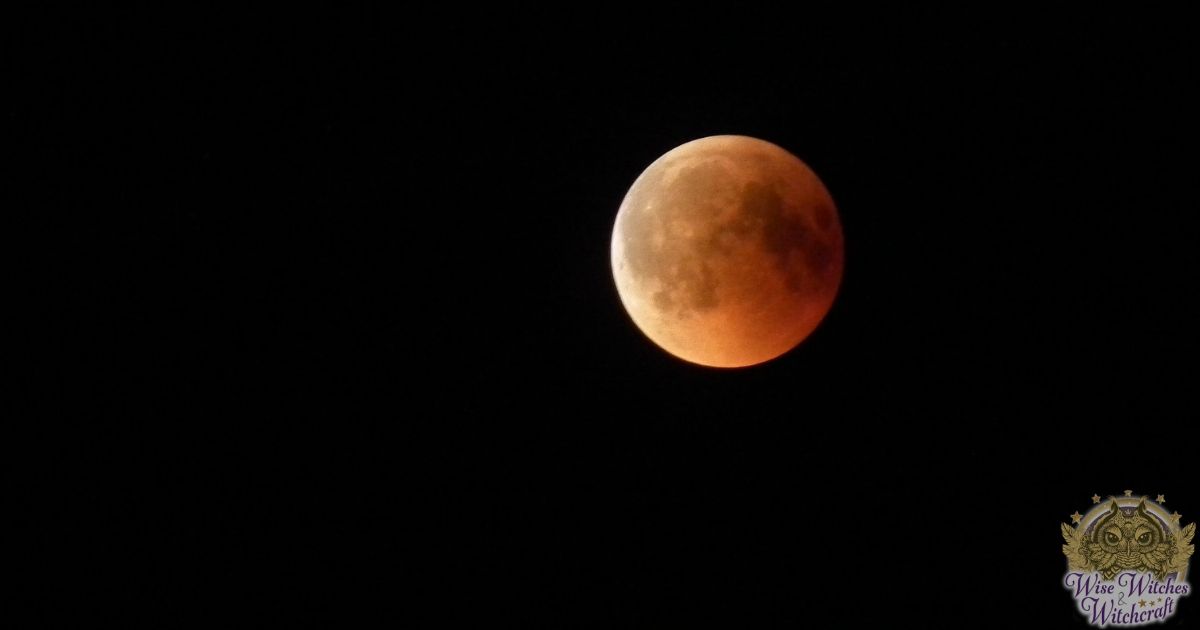
The October Full Moon phase comes with titles like the Sanguine Moon, Dying Moon, Hunter’s Moon, and the Blood Moon. “Sanguine” is a reference to medieval physiology and the humor of blood, so the Sanguine Moon and Blood Moon are the same. Since this is the time of hunting, the “blood” reference is better understood. The Blood Moon terminology is also applicable to a full moon eclipse in which the moon appears red in color. Since we have already celebrated the autumnal equinox in September, the leaves and plants are dying: Hence, the “Dying Moon” title.
Now is the time to focus on the final harvest and our last preparations for the coming cold. It is also the Esbat just before we celebrate the coming of the New Year on the witches’ wheel. As the year is soon to draw to a close, we can reflect on what no longer serves us and how we can sever our ties with what we no longer need in our lives. Meditations can focus on renewal of one’s purpose, redesign of one’s plans, and refocusing with greater direction and determination to achieve our aims.
Esbat Reflections for the Full Moon in November
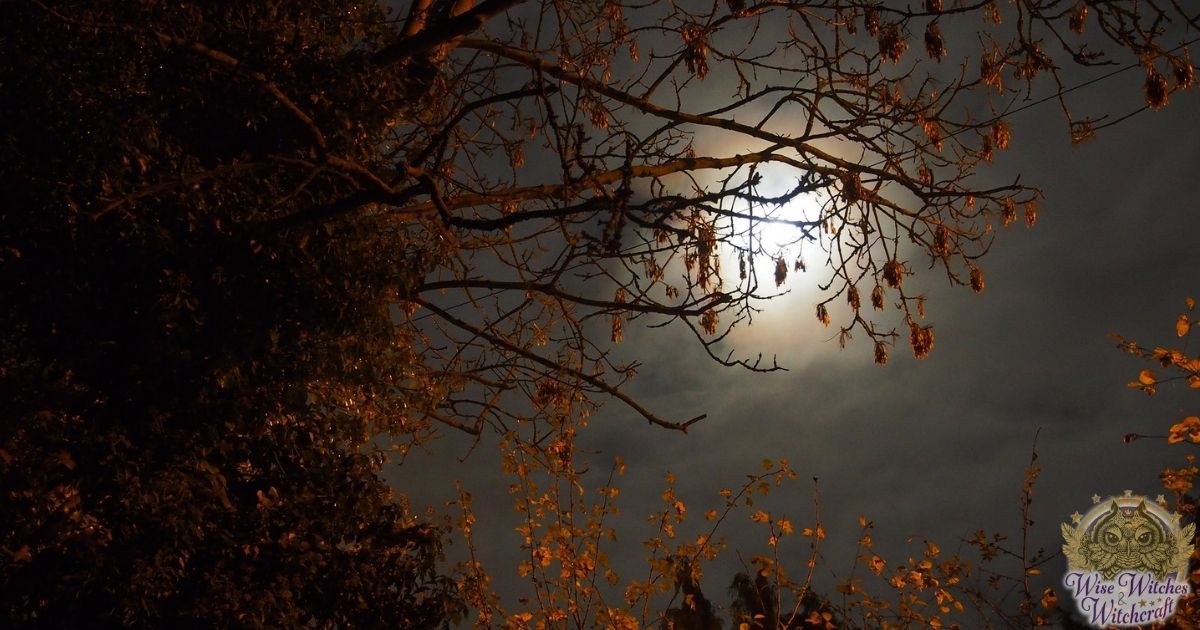
In the month of November, even the animals are readying themselves for the colder season. The Beavers will become far more active this month as they get ready for winter’s arrival; hence, the Beaver Moon in November. This moon is also called the Mourning Moon, the Frosty Moon, and the Oak Moon. During November, Esbat reflections can focus on our relationship with family and friends, upcoming family gatherings, and the sharing of one’s harvest and stored goods.
We can also reflect on all we mourn in the passing of the year into the new year: The past is gone and cannot be relived, but we can consider what we will do with the time that awaits us in the future. The Frosty Moon signifies the growing coldness and waning light, but it also reminds us the Goddess returns to her slumber once more. Here, we need to consider putting to rest the past as we look ahead to a bright future.
Esbat Reflections for the Full Moon in December

The titles for the December Moon reference the coldness of winter and the timing of the full moon phase. The Moon before Yule reminds us we are approaching the longest night and shortest day, but the day that follows promises increasing light. We also remember the story of the Holly and Oak Kings and how the two brothers rule over each half of the year, with the Holly King reigning from Summer Solstice until Yule, and the Oak King ruling from Winter Solstice until Summer Solstice. Sometimes, the Wolf Moon is a December reference, but the title is more typical for January.
The Cold Moon is suitable for this month as we are deep in the midst of the cold winter with the spring still several months away. We have readied ourselves for the colder months so now we can take pause and give thanks for all our blessings. So too, we can begin the work we need to plant appropriate seeds for the year to come. What do we want to accomplish this year? What role are we playing within the tapestry of the Universe? What is our purpose in life and what are doing to achieve it? These are the things to think about on the Esbat in December.
Esbats are More than Just a Pagan Celebration
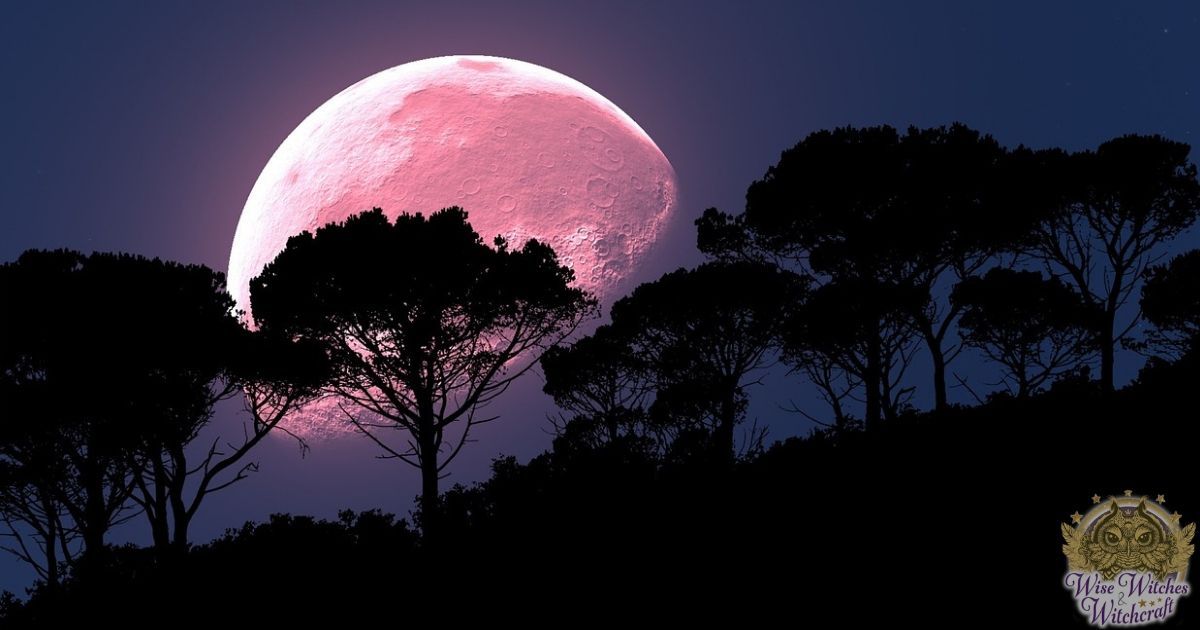
The Esbats are times of celebration and to honor the Goddess energies associated with a dualistic view of the Divine. They supplement the celebration of the solar Sabbats which help us attune to the Sun and the waxing and waning light. Since the moon reflects the Sun, the Esbats are times of reflection on how we walk our spiritual path and live our lives. It helps us remain in tune with the cycles of the Moon. As such, we not only revere the forces of nature but continue to recognize our role within it.

